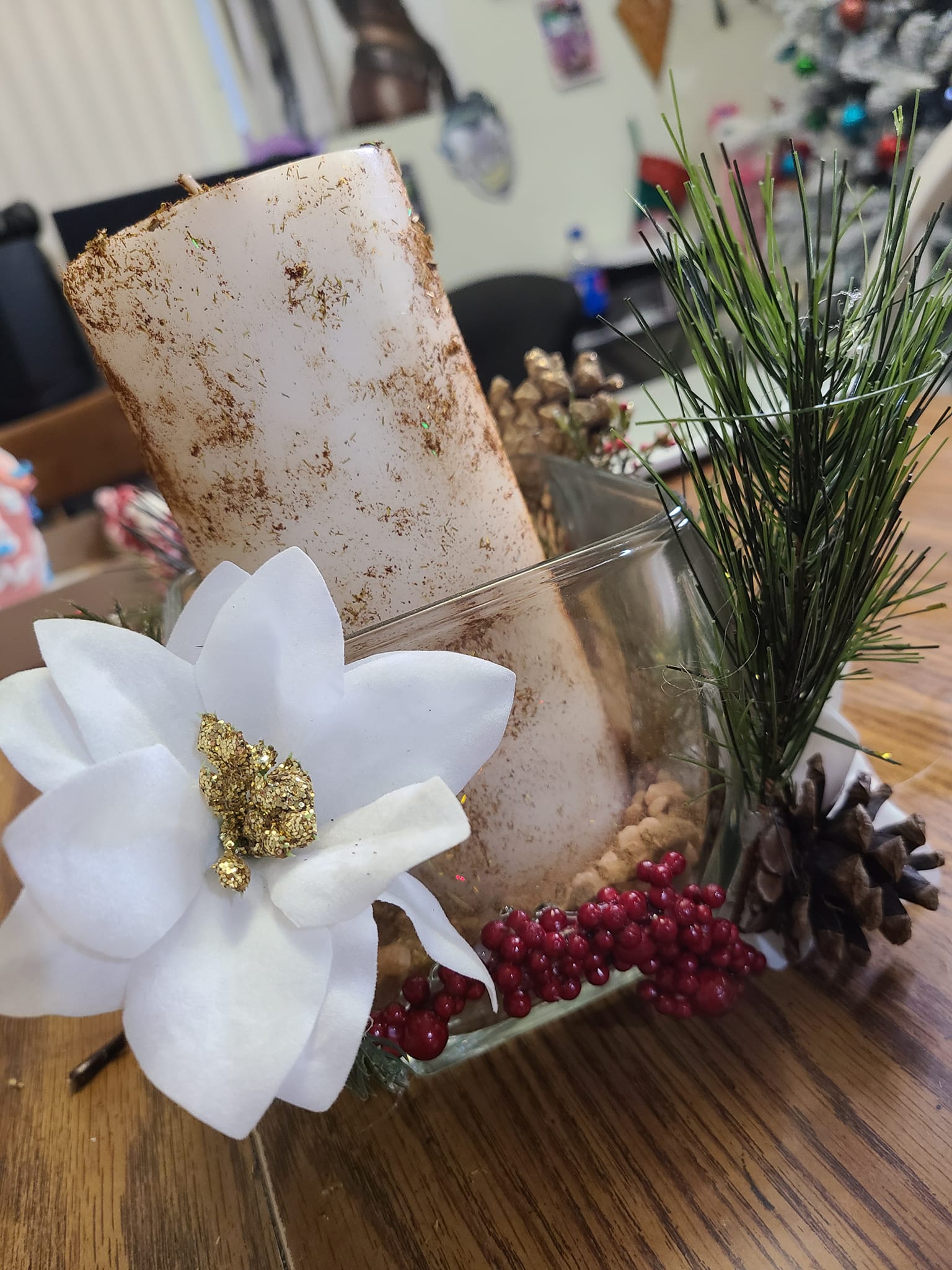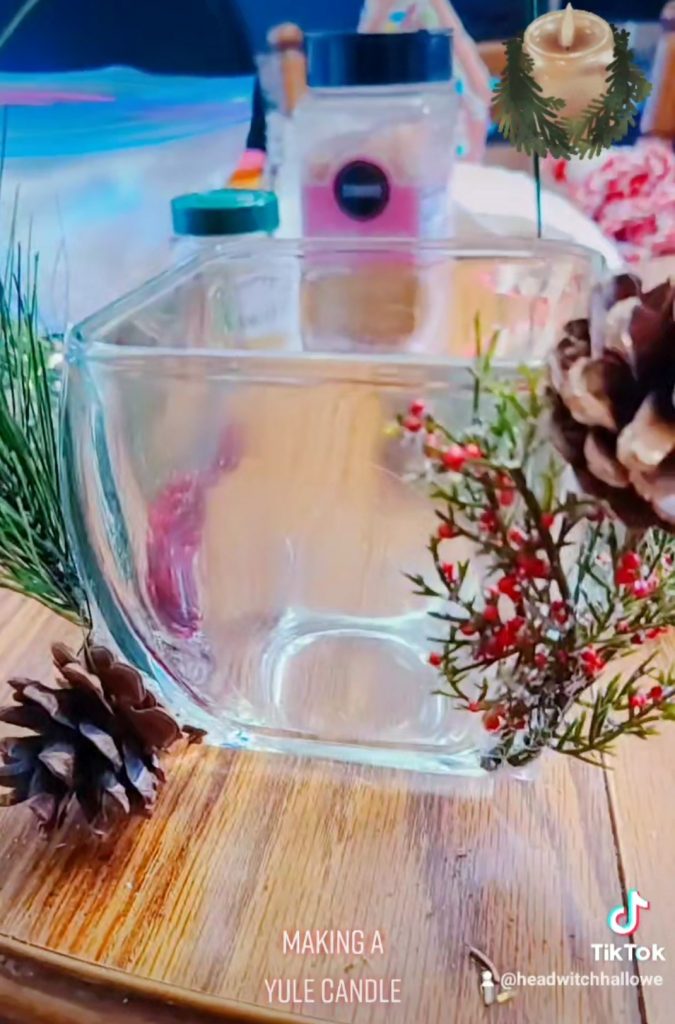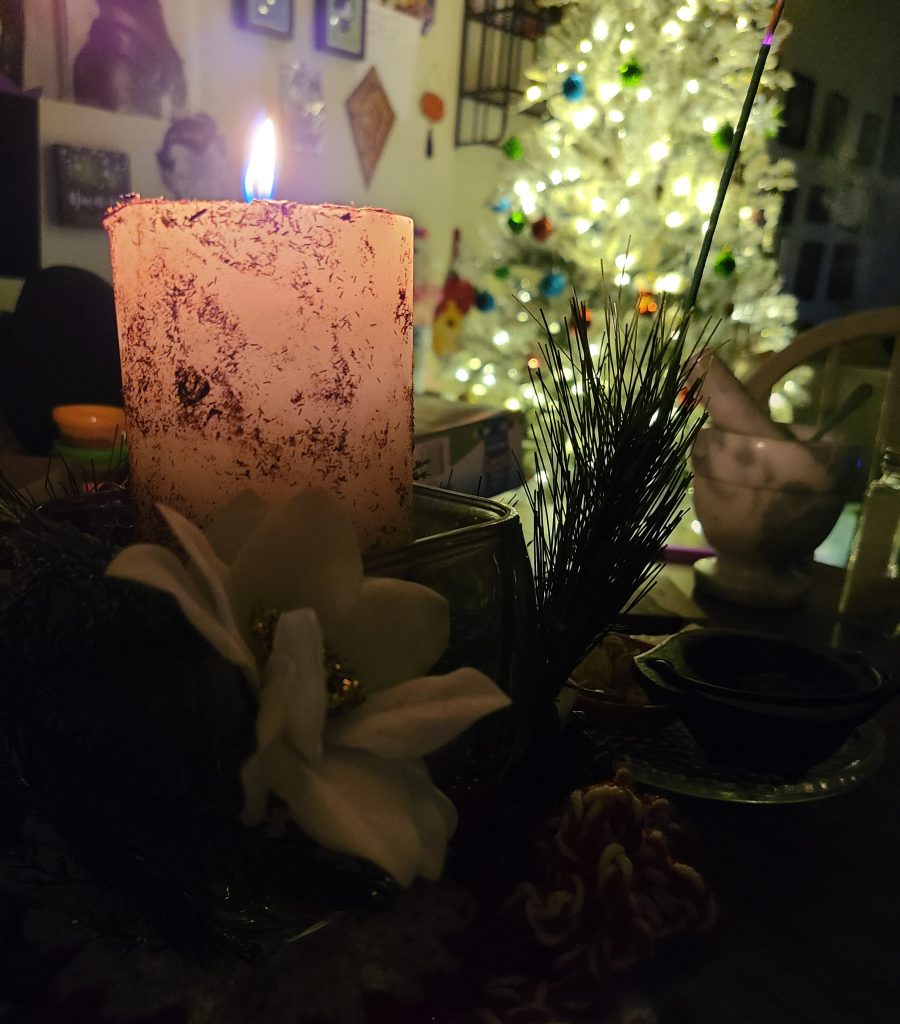
Making a Yule Candle
For when you don’t have the ability to burn a full-on Yule Log!
Please forgive me, I know this post is a wee bit late, but I still wanted to share it with all of you!
The history of Yule is a long and rich one. There are so many legends and beliefs from so many different cultures about why our Earth experiences the seasons, and each season has its own special meanings and rituals. Yule and Samhain are, by far, my favorite of the Pagan Sabbats, and both are steeped in tradition and history.
Yule is traditionally celebrated around the Winter Solstice, usually the 20th or 21st of December in the Northern Hemisphere. According to a Learn Religions article on Yule, found here, it is a holiday with European — specifically Norse — origins. Originally referred to as Jul by the Norse, it is a time of feasting, merrymaking, and, the article says, sacrifice, according to Icelandic sagas. The article cites that the Celts on the British Isles also celebrated what was referred to as “midwinter.” The original celebrations of Yule are also thought to be where the idea of “12 days of Christmas” comes from; Yule was written as being celebrated for 12 days, according to a Huffington Post article, found here.
Not to be that Pagan, but many Christmas traditions are actually a carry-over from Pagan celebrations of Yule — also known as midwinter or the Winter Solstice, depending on the region. Activities such as bringing in and decorating a tree, Wassailing, and burning a Yule Log all have origins in Pagan Yule celebrations.
For example, the Christmas tree as we know it is credited as starting in Germany around the 16th century, but Pagans were known for bringing evergreen trees and boughs, such as pine, spruce, and fir, into their homes during the winter months to drive off ghosts and evil spirits. Each tree also had its own particular meaning and use. Nowadays, for example, pine is thought to bring protection, longevity, and prosperity to the home and its inhabitants. Wassailing had a couple of different meanings, stemming from being lively and drinking copious amounts of alcohol, to going Christmas caroling from house to house, to even being a hot beverage served, especially around Christmas, and made from cider, wine, or beer, with sugar and baked apples. From a National Trust article, found here, Wassailing (as it has been practiced in Britain) was originally based on a Pagan custom to go out into orchards to sing to trees and spirits to ensure a good harvest for the coming year.
The Yule Log is one tradition that I have always been fascinated with. And I don’t mean the dessert, either, although that is the more popular search result when you Google “Yule Log.” From a Learn Religions article, found here, the tradition of the Yule Log began in Norway, where a huge log would be hoisted onto the hearth, and then burned to celebrate the return of the sun. It is also believed that some cultures even decorated the log with evergreens, mistletoe, and holly, each with its own representations, such as fertility and prosperity that those celebrating wanted to bring into the home and community. The Yule Log was enormous, thought to even be the trunk of a tree in some cases, and was meant to burn for 12 days, beginning on the Winter Solstice. When Christianity spread through Europe, the ashes of the Yule Log were scattered around the house to protect the occupants from evil spirits. The head of the house would also sprinkle libations onto the Yule Log before burning it. A piece of the Yule Log was kept, as a symbol of good luck, and to ignite the next Yule Log.
Many modern Pagans still use the Yule Log in their celebrations and have developed it into its own little ritual to welcome the light back into the world. For many, the ritual is intended for the whole family to get involved in! They will choose a log from a tree specific to the intentions that they want to manifest in the coming year, dress it in oils to match that intention, and then decorate it with evergreens, holly, candles, and other herbs to also represent their intentions. Some will use it as a decoration or centerpiece on a table until the Solstice when it is then burned in a fireplace or a fire pit to release the intentions for the coming year into the world. To further empower their manifestations, some will also write their wishes on pieces of paper, and then burn those along with the log.
I am not fortunate enough to have a fireplace, as I live in an apartment, and I can’t have a fire pit for the same reason. Yet I wanted to do something special for Yule, that I could eventually turn into a tradition that I could call my own, and eventually pass down to the Witchling or any other children I may have, if they so choose to practice Paganism, as well. I wanted that tradition to be based on the Yule Log, as close to it as I could get while living in an apartment, but the how stumped me for a while — no pun intended. And then, inspiration struck.
So, on one of my days off from work, I rushed to the store and gathered everything I thought I might need to make a “Yule candle.” Please see below for pictures of the candle and the process, as well as for instructions on how to create your own candle! Since there are technically 12 days of Yule, I’ll be burning mine each night until 01/02/2022, and I’ll hopefully have a bit of candle left over to light next year’s candle with, just like folks do with their logs. Since I also celebrate Christmas with my family, the feasting will have to wait until Christmas Day.

Pictured above, you’ll see everything I used to make my Yule candle. There’s a stick of frankincense, two bottles of Goddess oils I made myself, Himalayan pink salt, rosemary, cloves, cinnamon, glitter, a vase, fake greenery, and a pillar candle. I also used a plate to try and contain some of the mess, and hot glue to glue the fake greenery to the vase.
The first thing I did was energetically cleanse — or bless — the candle, the vase, and the herbs. To do this, I took the frankincense and lit it, then held each of the jars of herbs, the pillar candle, and the vase in the smoke and said a prayer for my Gods, ancestors, and spirit guides to cleanse each of the materials. One of the biggest components of performing magic is your intention and energy, so cleansing is meant to clear away any lingering energies that you may not want affecting your spell, as well as, essentially, “programming” the materials with the energy you want them to carry. In this case, I chose the frankincense to cleanse the materials because it is known as an excellent spiritual cleanser/purifier, and for enhancing the energies of other materials in a spell. Not only was I looking to cleanse my tools, but I used the frankincense as a way to bring cleansing to my entire home. My family has been going through some rough times, for multiple reasons, and I thought the energy could be cleared out a little.

Next, I took the candle and dressed it in both oils, the cinnamon, the rosemary, and the glitter. What I mean by dressing is that I took the oils and applied them all over the candle. The oils that I used, I made to honor the two Celtic Goddesses that I work with primarily — the Goddess Brigid and the Morrigan. I then dumped some cinnamon, rosemary, and glitter onto the plate in the first picture, then rolled the candle around in the mixture until it was as coated as possible in the herbs. Now, the reason I chose these herbs, specifically, was, again, because of their metaphysical properties. Cinnamon is believed to bring abundance and luck, as well as provide an energy boost to a spell working. I wanted to bring more luck and abundance into my home, so I blessed the cinnamon with this intention before adding it to the plate. Rosemary is thought of by Wiccans to be a universal herb (meaning you can use it to replace pretty much any other herb in a spell), and it is also believed to bring protection, healing, and mental clarity. Again, I wanted to bring these energies into my home, so I blessed the rosemary with these intentions before adding it to the plate, as well. If we’re being honest, the gold glitter is just for making the candle look a bit prettier, but gold is a color associated with prosperity and abundance, as well, which makes it an excellent addition to this candle.


The next thing you want to do is to decorate your vase/candle holder. I snagged a few branches of fake pine with pinecones, some fake holly, and some fake poinsettias, and then hot glued everything to the vase, to make it look as festive as possible, and to mimic the tradition of bringing evergreens and plants that bloomed in the winter months into the home.
The last thing to do before placing the candle in the vase is to add the herbs to the vase as a base. This will include the Himalayan pink salt, cloves, cinnamon, and rosemary again. I even added more glitter to this mixture. All you do is pour in as much as you like of each herb, after blessing it with your intentions, and then stir it up to mix it. You want to stir with intention, as well. What that means is, if you want to attract things to you, you’ll stir your mixture clockwise. And if you want to banish or repel things, you stir your mixture counter-clockwise. The salt is used for energetic purification, and the cloves are for protection. Once you’re done stirring everything, you can place the candle in the vase!
I can’t tell you how happy I am with the result. The candle is gorgeous, gives off a slight scent of cinnamon while it burns, and just warms my spirit overall. I can honor my Gods and ancestors all at once, which brings me so much joy. This is the first time I’ve done something specifically to celebrate Yule, and I am extremely happy that I did so. I feel like this is also subtle enough that those that are still in the proverbial broom closet can make this and set this up, and not have to worry about being asked too many questions about it.


What all did you do, and are you doing, to celebrate Yule and the return of the sun/spring? Let me see what you’ve made, how your celebrations went! Let’s discuss this below!

